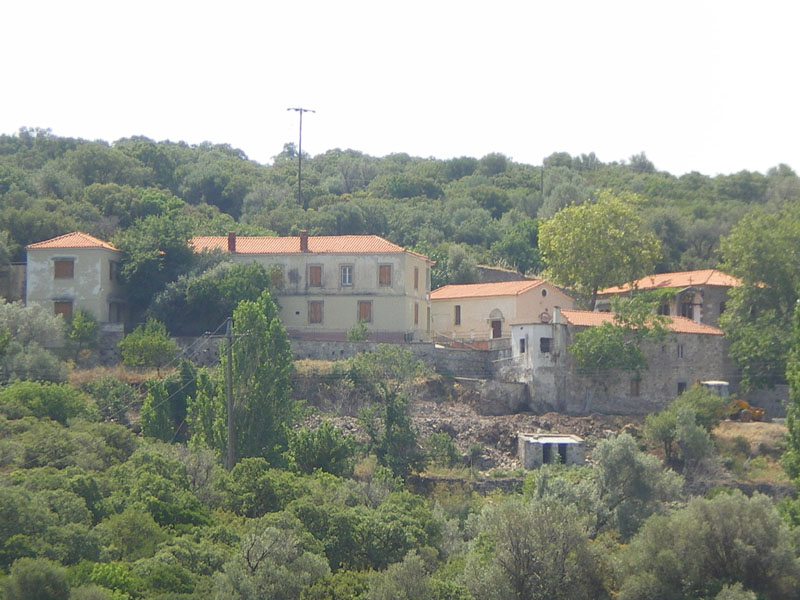
Damandrion was a village near Polichnitos, Lesvos, during the 16th century. Then it was mentioned in the metropolitan code of the Holy Metropolis of Mytilene. In the following century, many small villages of the region were destroyed by pirates or for other reasons abandoned by their residents, who then gathered to the four biggest villages in the region (Polichnitos, Vasilika, Lisvori, and Vrisa). That was also the case with Damandrion.
Regarding the foundation and first operation of the monastery, there are two stories. According to the first, the monastery preexisted as an urban monastery in or near Damandrion village. According to the other, the monastery was founded by the few monks of another nearby monastery, named “Palaeomonastera” (of which only a few ruins have been saved), who after surviving a pirate raid resorted to the deserted parochial church of the Theotokos in Damandrion, which they turned into the catholicon of the newly founded monastery. Or they could also have settled in the preexisting monastery.
The operation of the monastery is also proven by Ottoman tax ledger books, according to which in 1548 the monastery existed and paid taxes. The monastery quickly grew, however that didn’t last much. Soon there were no monks left and the Holy Metropolis and the Ecumenical Patriarchate only attended at the preservation of its buildings and its real property by leasing it out to priest or laymen from the region. Finally, in 1933 it was reclassified as a metropolitan farmstead. It was then that the whitewashed frescoes of the catholicon were discovered. From 1959 and for around 30 years, in a newly erected building, operated a nursing home under the supervision of the Holy Metropolis of Mytilene and local clergy. For around another 20 years, the compound was closed and abandoned (only a nun was shortly sheltered there). Finally, in 2006 the monastery was reestablished and hieromonk Michael Tyropolis settled there.
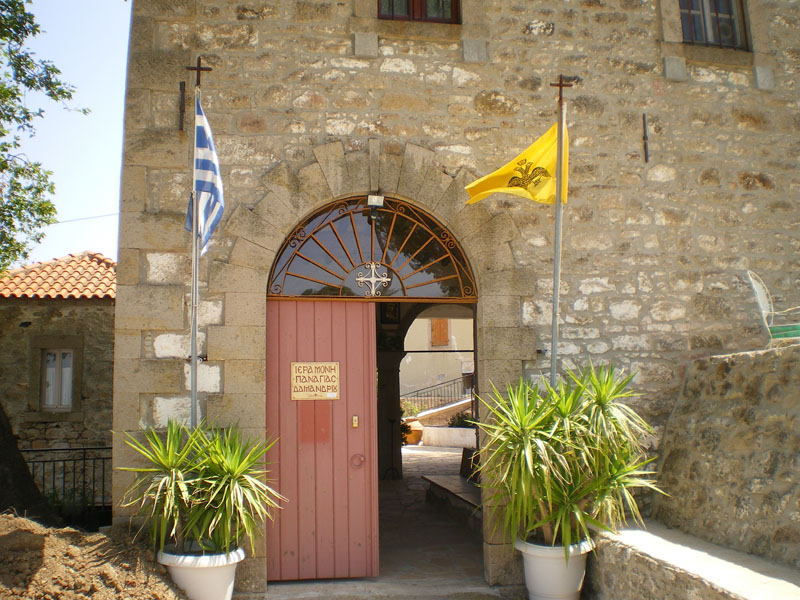
The monasterial entrance lies beneath the hegumeny. On both sides of the entryway, the ramblers can find stone benches covered with wood for their rest. All around they can see items and photos from a long-gone era and the doorway of the small museum.
Walking inside, one can see the small paved yard with the raised catholicon church of the Dormition of the Theotokos lying on the right. From beneath the church streams out a holy spring. The cells lie on the left, while in the background, untapped for the moment, there are the nursing home buildings.
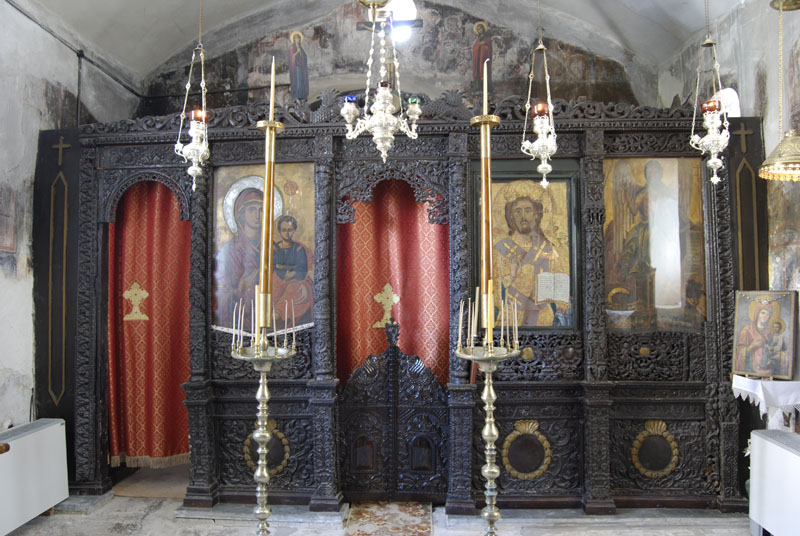
The monastery catholicon is dedicated to the Dormition of the Theotokos. It has a single-aisled basilica architecture with a covered narthex. There is a single entrance with a two-sided stairway, beneath the landing of which streams the spring. The roof has probably been destroyed and reconstructed, which can tell for it having no frescoes, unlike the walls. The ground is covered by old unsymmetrical paving stones, some of which are embossed with folk art.
The three icons of the iconostasis are remarkable. Only the icon on the shrine, “the Unfading Rose”, dates back to the 16th century. The icon of the Theotokos is a copy of an older icon that is now kept in the Mytilene Ecclesiastical Museum. It depicts Theotokos Hodegetria with Christ in her left hand and it dates to the late 17th century. Neither the icon of Christ on the iconostasis is the original one. It is an old icon (1775) of the Pantocrator. Finally, the icon of the Forerunner dates to the early 18th century and depicts Saint John the Baptist with angelic wings and a scroll on his left hand. Damandrion frescoes were discovered after 1932 and are of the most noteworthy on the island. The date back to around the 16th century, while some were recolored during the 18th century by a painter coming from Chios with the signature “1733 Michael Chomatzas of Chios supposedly a painter.”
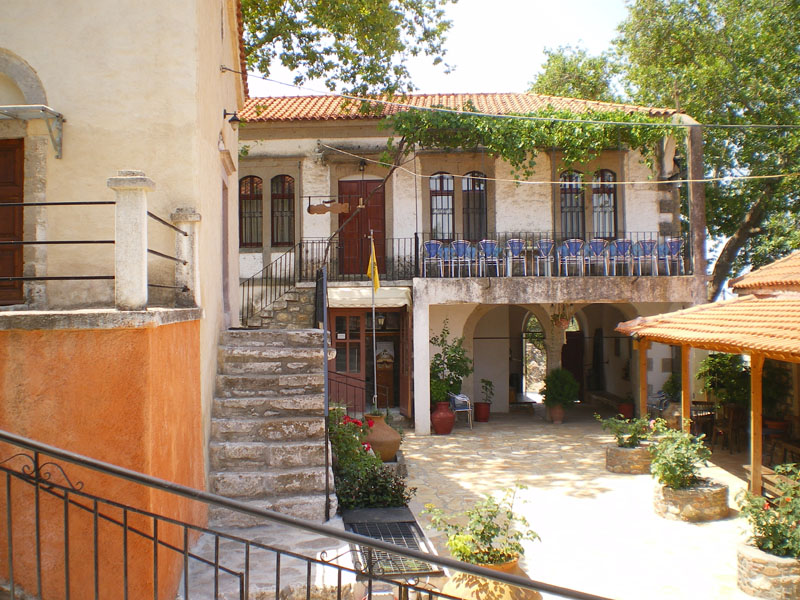
There are remnants of many outer chapels that once belonged to the Damandrion monastery. Most remarkable is Panagia (ruined) and Saint George (half-ruined), where ruins of the old monastic cells can be seen. There are also remnants of the chapels of the Myrrhbearers, Saint Marina and the Transfiguration. Saint Paraskevi, Taxiarch Michael, Saint Basil chapels stand in good shape, while Saint Demetrius chapel near the monastery was renovated in 2009. Finally, the previously so-called Saint George Holy Shrine in Melanta was declared a dependency of Damandrion.
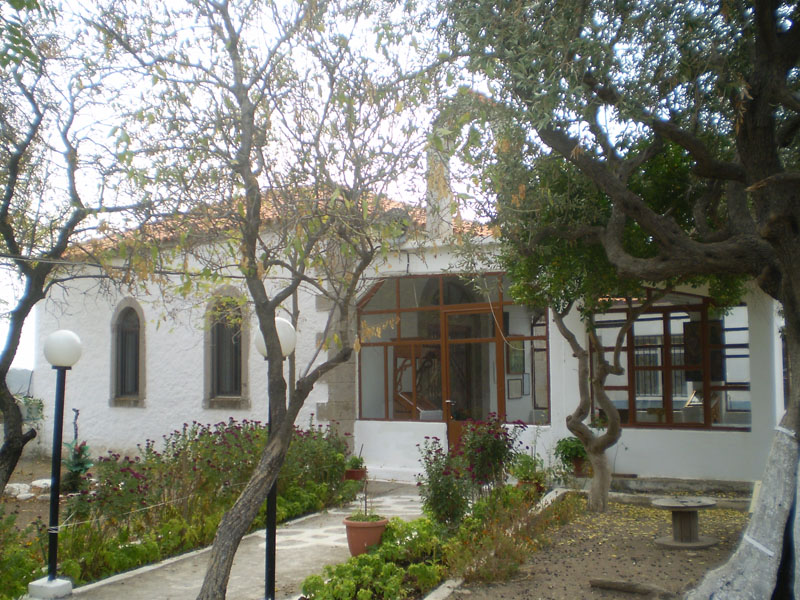
The monastery is celebrated twice a year. On August 23, the feast of the Apodosis of the Dormition of the Theotokos and, following a decades-old custom, on August 6, the feast of the Transfiguration of the Savior. The Divine Liturgy is regularly held on every Saturday after the midnight office, the vespers and the hours and starts at 7.30 a.m.
Phone number: 22520 – 41319
Address: Damandrion Monastery, 813 00 Polichnitos (Lesvos)
e-mail: i.m.damandri@gmail.com




